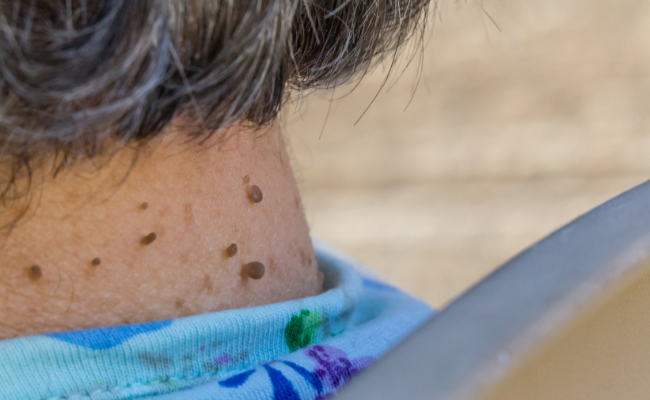How to Treat Skin Tags?
- November 08, 2023
- No Comments

What are Skin Tags?
Skin tags, medically referred to as acrochordons, are small, soft, and benign growths that extend from the skin. Commonly found in areas where skin experiences friction, such as the neck, armpits, under the breasts, and in the groin, skin tags are harmless and present no health risk. Despite their benign nature, individuals may opt for removal due to cosmetic concerns or if they cause irritation. These diminutive growths, resembling skin tissue on a tiny stem, share a skin coloration and may occasionally appear darker, akin to a raised mole. Typically measuring between 1-5 mm, some skin tags can grow to a few centimeters in size.
Why are Skin Tags a Concern?
While skin tags themselves are generally harmless, they can be a concern for some individuals due to their appearance or location. Skin tags in areas prone to friction can become irritated, causing discomfort. Additionally, their presence may impact a person's self-esteem or confidence, prompting the desire for removal.
How to Identify Skin Tags?
Identifying skin tags involves recognizing small, fleshy growths on the skin connected by a thin stalk. They are usually flesh-colored or slightly darker and can vary in size from a few millimeters to larger than a centimeter. Skin tags are typically soft to the touch and are not painful unless irritated.
Treatment Solutions for Skin Tags:
- Over-the-Counter Solutions: Several over-the-counter (OTC) products, such as creams, patches, and solutions, are available for at-home treatment of skin tags. These products often contain ingredients that work to break down the tissue of the skin tag, causing it to gradually fall off. It's essential to follow the product's instructions carefully.
- Cryotherapy: Cryotherapy involves freezing the skin tag using liquid nitrogen. This procedure is typically performed by a healthcare professional and causes the skin tag to fall off after a period. Cryotherapy is effective but may cause temporary redness or blistering.
- Electrosurgery: Electrosurgery utilizes a high-frequency electrical current to cut off the blood supply to the skin tag, causing it to wither and fall off. This method is often performed by a dermatologist and may require local anesthesia.
- Ligation: Ligation involves tying off the blood supply to the skin tag using a fine thread or dental floss. This can be done at home or by a healthcare professional. The lack of blood flow causes the skin tag to eventually drop off.
- Excision: Excision is a minor surgical procedure performed by a healthcare professional, such as a dermatologist. The skin tag is cut off using a scalpel or surgical scissors after the area is numbed with a local anesthetic.
Benefit Points of Skin Tag Treatment:
- Improved Aesthetics: Treatment of skin tags can enhance the overall appearance of the skin, particularly in visible areas such as the neck or face. This may contribute to improved self-esteem and confidence.
- Reduced Discomfort: Removing skin tags in areas prone to friction or irritation can reduce discomfort and prevent further issues, such as chafing or inflammation.
- Quick and Minimally Invasive: Many treatment options for skin tags are quick and minimally invasive. Procedures like cryotherapy or ligation can often be performed in a short office visit, providing a convenient solution for those seeking removal.
- Low Risk of Complications: The removal of skin tags is generally a low-risk procedure. While there may be minor side effects such as redness or temporary discomfort, serious complications are rare.
- Professional Guidance: Seeking the expertise of a dermatologist or healthcare professional ensures proper diagnosis and treatment. Professional guidance minimizes the risk of complications and ensures a safe and effective removal process.
- Options for At-Home Treatment: Over-the-counter solutions offer individuals the option to treat smaller skin tags at home. These products provide a convenient and cost-effective alternative for those who prefer self-administered treatment.
Comments (0)